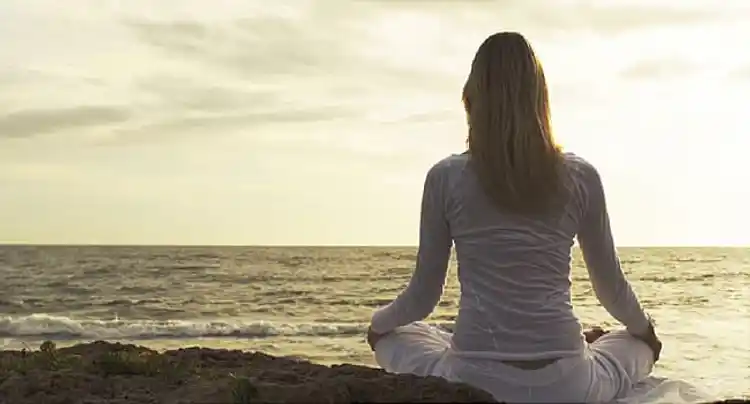A Treat for Your Mind and Body at Home
Sept. 8, 2023 – Feeling burned out, overwhelmed, stressed, unmotivated, or fatigued? It’s time to take better care of yourself.
Recent research from McKinsey points to increased consumer interest in wellness in areas such as nutrition, health, fitness, appearance, mindfulness, and sleep. A wellness retreat can help with all of this. While it would be an indulgent treat to book a weeklong stay at a wellness resort, not everyone has the time, budget, or resources to make this a reality.
Fortunately, you can take a do-it-yourself approach by creating a meaningful wellness retreat at home. But where do you start? And what wellness components should you focus on?
WebMD reached out to experts at Hilton Head Health, a renowned wellness resort in Hilton Head, SC, for tips on re-creating the wellness retreat experience at home.
Understanding the Power of Self-Care
In light of our on-the-go, always-connected lifestyles, emphasizing self-care takes on even greater significance these days.

Anne Poirier, director of behavioral health at Hilton Head Health, defined self-care as any activity you do on purpose to preserve or improve your physical, emotional, or mental health. “Taking time to listen to what your body and mind need – and then taking action on that – is what self-care is all about,” said Poirier, noting how it eases stress, increases energy, and improves mood.
“Creating and making time for an at-home retreat can be a wonderful way to kick-start a self-care routine or allow for true recovery and rejuvenation to bring your best self to your work, family, and life,” Poirier said.
Program Director David Chesworth said the goal is to come back to your day-to-day feeling refreshed and re-energized, reaping benefits such as fewer aches and pains, increased focus, better mood, and better-managed stress.
Setting the Stage
The most important task is deciding the retreat’s goal, Poirier said. Is it rejuvenation? Self-discovery? Energy? Your goal will help tailor retreat activities to meet your needs. A good starting point is to consider the essential components with a holistic approach.
“The retreat process involves unplugging from your day-to-day life and elevating some, or all, of the pillars of nutrition, fitness, recreation, curiosity, mindfulness, recovery and relaxation – all of which contribute to your mind and body feeling refreshed,” Chesworth noted.
Poirier offered some practical planning tips to protect your time, set boundaries, and get rid of stress.
“Reserve the weekend, letting others know you’ll be off grid!” she said. Nothing can derail your best-laid plans quicker than unexpected visitors and disruptive phone calls.
Other pragmatic tips?
- Clean the house before the retreat so you don’t get caught up in clutter.
- Plan and prep your meals and snacks ahead of time.
- Make a schedule – with some space. “At Hilton Head Health, we call this structured flexibility,” Poirier said. “I have some structure to my weekend, and I am also flexible to listen to my own needs.”
- Pick up everything you’ll need, including food, herbal teas, colored pencils, a journal, incense, beauty treatments, etc.
The goal is to make your retreat space functional, beautiful, calming, and conducive to some quality “me time.”
Planning Your Retreat
Depending on your lifestyle, goals, and budget, the retreat can last from 1 day to a long weekend to a whole week. Is there an ideal length? Within reason, the longer the better, according to Bob Wright, director of lifestyle education at Hilton Head Health.
“It might be unrealistic to do it for an entire week, and 1 day probably isn’t enough time to see any measurable benefit,” said Wright, noting a long weekend could work. Poirier said a weekend provides enough time for the body to decompress. But she said it can be helpful to take even 1 day “off” from normal daily activities and immerse yourself in self-care.
Because budgets for a DIY retreat will vary, Chesworth offers both cost-effective and splurge-worthy options. One budget-friendly idea is to spend time outdoors. “This is a great way to boost mood, promote sleep, and get some vitamin D!” he said.
Go for a walk in a nearby park, connecting with local beauty. Chesworth suggests either bringing a friend to add a social element or going solo (and leaving your phone at home) to add a mindful element. When it comes to splurging, Chesworth suggests booking a massage therapist to come to your house or scheduling a pampering treatment at a local spa. If you enjoy cooking, learn some new healthy recipes. “But if you dread cooking, consider hiring a private chef or treating yourself to healthy meals at local restaurants,” he suggests.
Unveiling the Retreat Experience
A good wellness retreat should include a combination of energizing and relaxing activities, Poirier said. Depending on your goals and lifestyle, this can include:
- Nourishing food
- Getting outside in nature
- Meditation
- Movement (yoga, walking, dancing, etc.)
- Hydration (enjoying infused water or herbal teas)
- Joyful activities (listening to music, journaling, coloring, reading)
- Pampering the body (getting a massage, taking a bath, conditioning your hair).
Nutrition
Because a wellness retreat is more than just eating healthy meals, take time to identify your personal nutrition goals, said Elizabeth Huggins, a registered dietitian and nutritionist. “Once you’ve defined your goal(s), consider factors that add structure to your day: food choices, portion control, dining ambiance and environment, meal and snack times, and an approach to mindful eating,” she said.
She suggests planning meals that include fresh vegetables, lean protein, and a whole grain or beans, and leaving out ultra-processed foods. Also, consider meal combinations that will leave you feeling pleasantly satisfied and energized rather than feeling uncomfortable, lethargic, or suffering from indigestion. Depending on your goals, you might work in a special treat (think raspberry sorbet or a couple of squares of dark chocolate), keeping portion control in mind.
Finally, no matter where you dine, before eating, Huggins advises pausing for a moment of gratitude and making the most of mindfully eating. “Focus your attention on body-related sensations, including sight, smell, sound, taste, and texture of food,” she explained.
Physical Activity
Make time for a variety of fitness experiences to give your body and mind more energy. In addition to nature walks, Chesworth offered a few suggestions.
“This is a great time to experiment with local studio gym classes that you never get around to trying,” he suggested. Try boxing, learn to play pickleball, or take Pilates. Or explore working with a personal trainer, booking a session either at home or in a gym.
If you’re looking for guidance in the comfort of your own home, following along with video workouts could be a great solution. Of course, you can always find free workouts on YouTube. But if you’re looking to bring the energy of a real retreat to your home, you can buy or subscribe to online exercise programs.
Sleep
Creating a restful environment plays a key role in sleep quality.
“One of the most important things we can do to support or improve our health and well-being is get high-quality sleep in the right amount,” Wright said.
In the short term, Wright said that if you could prioritize sleep even for a week or a few days and notice the positive impact it can have, it may motivate you to regularly focus on sleep. In the long term, Chesworth suggested investing in a quality, sleep-supportive environment. That might mean upgrading your mattress, pillows, and linens, and investing in blackout curtains.
Mindfulness and Stress Management
To cultivate mindfulness and better manage stress, Poirier said that meditation should be the first thing to plan into your retreat. “Start each morning with a grounding meditation to help set the retreat’s tone,” she said. Use free or paid meditation apps (like Insight Timer or Calm) to find what works best for you.
Other stress-relieving activities include practicing yoga, stretching, coloring, listening to relaxing music, walking in nature, journaling, soaking in an Epsom salts bath, and laughing (rent a comedy or watch a sitcom). Schedule a few of these activities into your retreat.
“Make sure to schedule down time,” Poirier advised. “One mistake we make is to try to fill every minute. Instead, create some space in your weekend to just be.”
Beyond the Retreat: Measuring Success and Integrating Habits
Be realistic with your retreat expectations, Wright said.
“After a weekend, or even a weeklong, retreat, it would be unrealistic to expect to see significant physiological changes or improvements,” he said. “I’d focus more on factors such as energy, stress, restfulness, and mood.”
One way to assess those factors? Wright suggested doing a pre-retreat and post-retreat assessment using a scale. For example, on a scale of 1-10, how fatigued do you feel (1 being not at all, 10 being very), how stressed, how energized, etc. “If these quality-of-life indicators improved during your at-home retreat, it might motivate you to implement some retreat practices on a regular basis,” he said.
If you noticed areas of improvement (more energy, less stress, more rest, less hunger, etc.), Wright advised creating a SMART goal (specific, measurable, action-oriented, realistic, time-bound) around the behaviors that led to the improvement.
By following these expert insights, you can create a personalized at-home wellness retreat that rejuvenates your mind, body, and spirit. More importantly, the retreat can help you add self-care habits to your daily life, fostering a sustained commitment to your mental and physical well-being.



